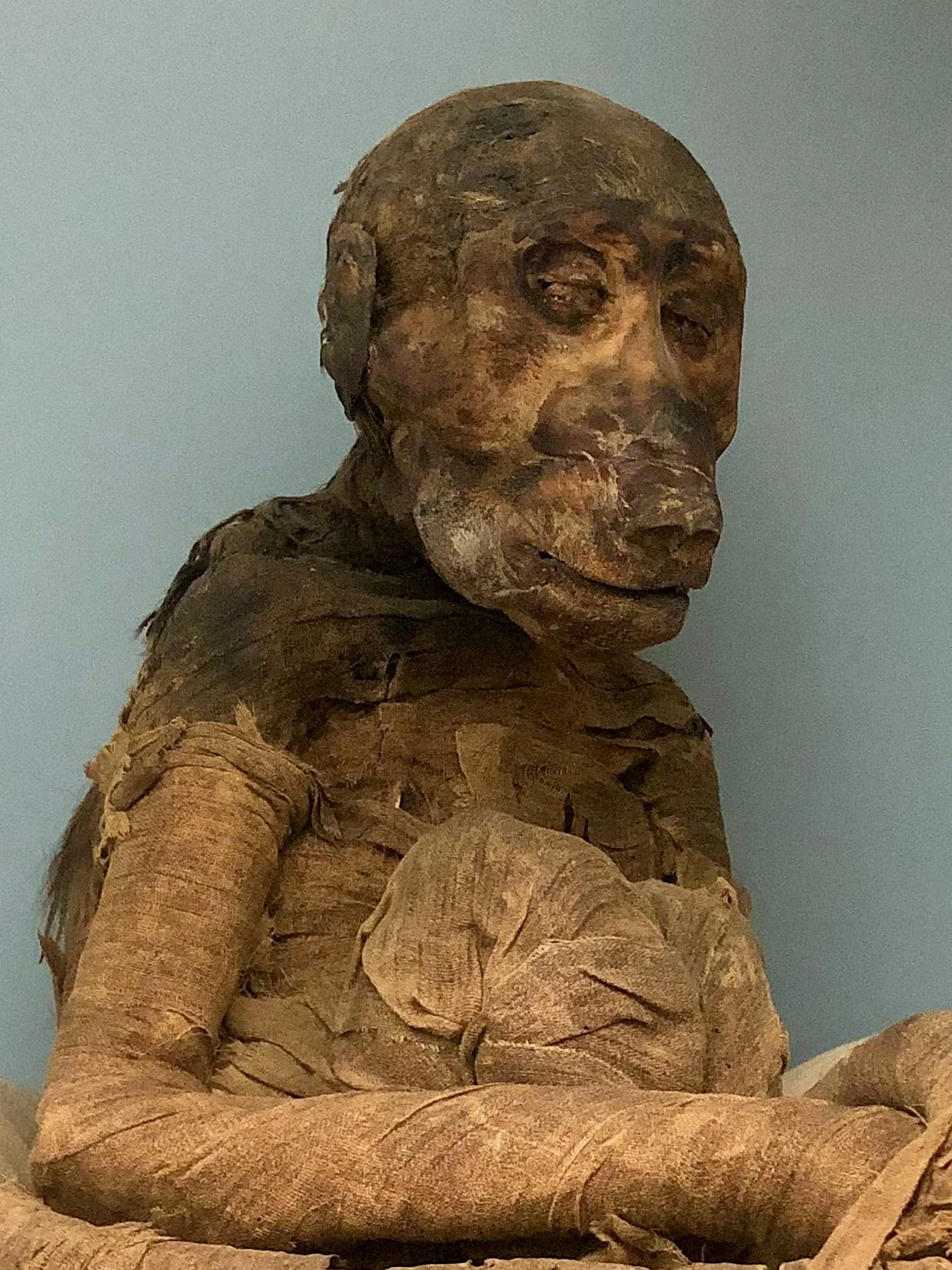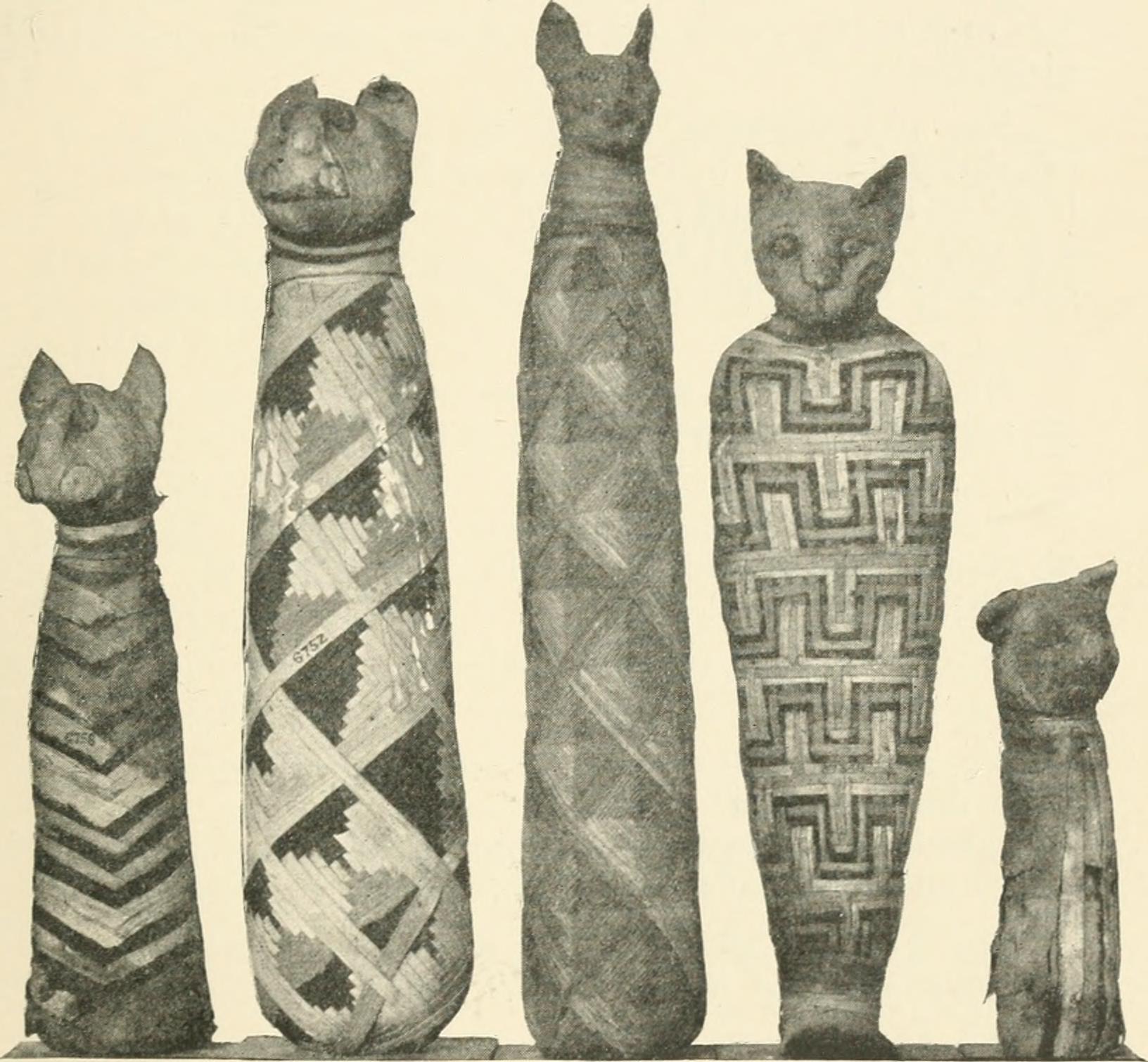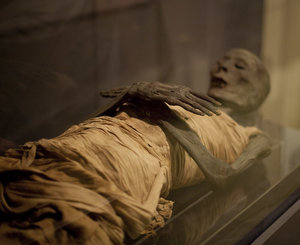4 reasons Egyptian animal mummies were created — and what the mummification process involved. (Spoiler alert: Think turpentine enemas.)
One wing of the Egyptian Museum in Cairo contains animal mummies like this baboon
When they hear the word “mummy,” most people think of the bad horror movies of the past that starred a reanimated corpse wrapped in what looks like toilet paper. Those of us who have visited Egypt have been lucky (or perhaps unfortunate) enough to have seen rooms full of the dark-skinned, twisted, desiccated remains of the ancient pharaohs.
But humans weren’t the only ones who were mummified by the Ancient Egyptians: Animal mummies were produced from about 800 BCE to 400 CE. This included all sorts of creatures, from cats and dogs to bulls, crocodiles, birds and more. They even mummified hippos!
“The animal’s butt was then plugged with a “linen tampon” until all internal organs had softened and would flow out when uncorked.”
There were four types of animal mummies in Ancient Egypt:
1. Food for the deceased in the hereafter
Leg of goat or duck breast, anyone?
Ancient Egyptians expected (or at least hoped for) an afterlife much like their time on Earth. They wanted to play with their toys, ride chariots, go hunting and perform other activities they enjoyed while alive. And that of course included eating. So the mummified remains of animals found in some tombs were there to provide sustenance in the next world.
Ancient Egyptians wanted their pet kitties to be with them in the afterlife, so they were mummified and put into their tombs (let’s hope they were at least allowed to live out their natural lives)
2. Pets of the deceased
It’s not clear if these pets were killed or allowed to live out their natural lives. But who doesn’t want to play with their pet gazelle or dog in the afterlife? I know my version of heaven would include my cats, Co-Co, Norman and Bowzer, all lounging with me while I watch new episodes of Gilmore Girls and Jane the Virgin.
Part of Egypt was home to a cult that worshiped (and mummified) bulls
3. Cult animals
Some animals were thought to house the spirit of a god during its life. Bull cults were particularly popular, but other animals joined the minor pantheon. People could predict the height of the Nile flood based on where crocodiles built their nests. Baboons were associated with Ra, the sun god, because every morning they face the east and raise a racket, which Ancient Egyptians believed helped the sun rise. And sacred ibises, now extinct since the 19th century, with their crescent moon-shaped beaks, were connected to the god of wisdom, Thoth, who bears an ibis head.
This falcon mummy was a cult animal or an offering to a deity like Horus
4. Votive offerings
This is similar to a candle lit in a church — only it’s an offering of something like a desiccated corpse of a crocodile instead.
Votive offerings weren’t considered divine — they were simply offerings to the gods. It strikes me as a bit odd that you’d offer up a dried-up dead cat to honor the feline-headed Bast, for instance. It seems she might take offense, but I’m assuming she didn’t. The Egyptian gods are an odd bunch.
Animal votive offerings packed prayers with an added punch. The animals were believed to gain access to the realm of the afterlife to carry pleas to the gods.
And they were a big biz. Massive amounts of animal mummies have been unearthed at Saqqara (8 million dog mummies alone!). That was just one of many sites throughout the country where votive animal mummies were discovered. In fact, it’s thought that up to 70 million animals were turned into votive offerings throughout the Egyptian Empire.
This votive offering contains dog bones
I don’t like this idea, but researchers think that many of the animals were killed to meet the demand of pilgrims seeking favors from the gods. In fact, millions of animals were victims of breeding farms, raised for the sole purpose of being killed and mummified. I suppose it’s not much different from factory farms or what happens to alligators in New Orleans, where their heads are piled high in every souvenir shop. And something tells me the rabbit once attached to the foot I had as a good luck charm as a kid didn’t die of natural causes.
The sacred ibis is now extinct, but the long-billed bird was associated with Thoth, the god of wisdom
Researchers from the Manchester Museum and the University of Manchester in England used X-rays and CT scans to examine over 800 Ancient Egyptian animal mummy votive offerings. They found that one-third contained actual mummies of birds, cats, crocodiles and other animals. Another third had only partial remains. And the final third had no animal remains at all: They were linen wrappings stuffed with mud, sticks, eggshells, feathers and herbs.
At first, these offerings were thought to be fakes meant to dupe unsuspecting pilgrims. But the resin and contents found within were different for each type of animal and were actually quite expensive at the time. So the buyers might have been aware that they weren’t getting actual mummies and were OK with that. After all, they still had something of great value — but less expensive than a proper mummy — to offer to the gods.
Below the arches, you can see a variety of animal mummies in this illustration by Giovanni Battista Belzoni, a well-known archaeologist
How Animals Were Mummified
The discovery of sacred bull remains have allowed scientists to figure out how Ancient Egyptians mummified animals. (It’s gruesome but surprisingly similar to what they did to humans who couldn’t afford the royal treatment.)
Known as Buchis bulls, the holy animals were the center of a cult in Armant, a town south of Luxor. They were associated with Montu, a falcon-headed god of war, and represented strength and fertility.
Turpentine enemas and linen butt plugs were involved in the time-consuming process to make a bull mummy
To mummify one of these beasts, they probably first inserted turpentine or juniper oil into the anus or, ahem, a nearby orifice. Archaeologists have found enemas, douches and vaginal retractors at the excavation site. The animal’s butt was then plugged with what the sign at the Egyptian Museum in Cairo called a “linen tampon” until all internal organs had softened and would flow out when uncorked.
The animal was then packed in natron (hydrous native sodium carbonate — a fancy way to say that it’s a salt). This naturally occurring preservative worked wonders in drying out corpses. Large animals were laid in natron for 40 days (just like humans).
The Buchis bulls were arranged in the position of a sphinx — not natural for the animals, so they had to cut the leg tendons to avoid breaking any bones.
Animal mummies were ceremonially wrapped in linen, then coated in a resin to help preserve and protect them from disintegration and bug infiltration. This time-consuming and expensive method resulted in a mummy as good as that of any human. –Wally






























